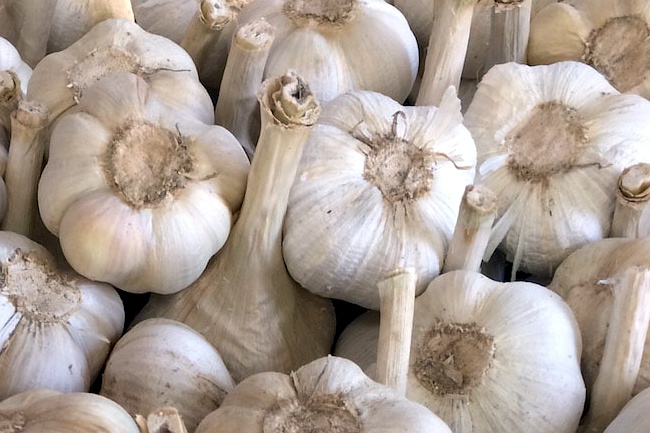
Valdichiana’s Aglione: expression of the Italian cultural heritage
The Valdichiana’s Aglione was registered in the regional and national list of traditional agricultural products (PAT). This is an important milestone for Valdichiana and its food farming products.
Essential requirement to be recognized as Traditional Agricultural Products (PAT) is that it is “obtained by methods of working, preservation and seasoning well-established over time, homogeneous throughout the territory concerned, according to traditional rules, for a period of not less than twenty-five years“.
With such features, the Valdichiana’s Aglione has really been put on the list of PATs, becoming officially one of the products of excellence indissolubly linked to the territory of Valdichiana Senese, as well as an expression of Italian cultural heritage.
The process carried out by Qualità e Sviluppo Rurale srl [Quality and Rural Development] goes in the direction of an even more ambitious project, namely, creating an association of producers for the protection and promotion of Aglione at a local, national and international level.
Here below you find some information and curiosities about this extraordinary product (Source: Tuscany Region).
Area of production: Valdichiana Sienese and Valdichiana Aretina, namely the area crossed by the Canale Maestro della Chiana, which retraces about two thirds of the ancient course of Clanis, but in the opposite direction, that is to the north, as a tributary to the Arno river.
Description of the processing methods: the soil for the cultivation of Aglione must be loose, sandy, medium-sized, with no water, and damp in the subsoil. Before sowing, the soil must be overturned to bury any crop residues. The planting cloves (pickling-selected vegetative breeding material) is carried out from the beginning of October up to December; the distances used for dwelling range from 30/35 cm on the row and 40/45 cm between the rows, with a density of about 7,000 cloves/ ha; such curve allows natural ventilation, and avoids the onset of fungal diseases, such as botrytis, in the foliage.
Materials, equipment and premises used for production: premises for the preparation and drying of the cloves.
Observations on the traditional nature, homogeneity of dissemination, and the protracted nature of production rules: some companies in Valdichiana have actually retained the production of this crop, passed down through many generations, that dates back to Etruscan times in the countryside surrounding the current Montepulciano, and the techniques of production are the same ones used at that time.
In 1969, the town of Celle sul Rigo, a hamlet of the Municipality of San Casciano dei Bagni,launched the “Festival of pici (namely, a traditional handmade pasta made in the Valdichiana area) of Celle”, also seasoned with Aglione sauce.
A trustworthy reference is also in the first historical re-enactment of Montepulciano’s Bravio delle Botti, which took place in 1974, and featured the presence of pici (namely, a handmade pasta typical of the Valdichiana’s area) seasoned with Aglione sauce in the menus proposed by the various contrade (town districts). Today its distribution is guaranteed by the zero food miles markets, such as the “Bertoldo Market” in Montepulciano.
The Valdichiana’s Aglione is also present on the Giglio Island, because in 1544 pirate Khayr al-Din, known as the Barbarossa, raided the island and killed anyone who opposed, and deported as slaves over 700 islanders. Subsequently, the Medici family repopulated the island with people coming from Valdichiana families, such as that of Francesco Giudici, and in 1686 the Stefani family, coming from Arezzo, in Valdichiana, on the occasion of the repopulation wanted by the Grand Duke of Tuscany.
